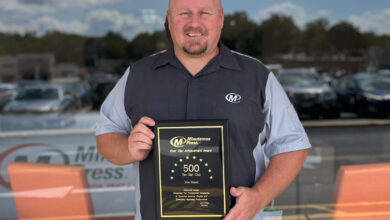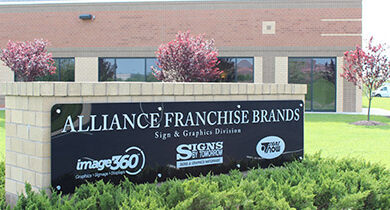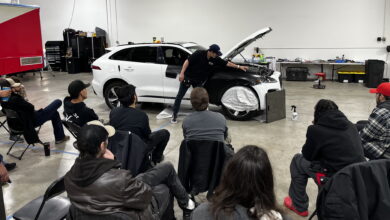Any way you slice it, finishing plays a pivotal role in the long-term success of print service providers (PSPs).
In a dynamic large-format marketplace where in-shop printers are rapidly producing rigid stocks and roll-to-roll flexible media, a production gridlock has entered the finishing department, creating a distinct urgency to manage reduced lead times and gain market share by merging the profitability of the print and cut process.
This traffic jam of tasks can feel a bit overwhelming to most. After all, the most prominent asset in finishing is the ability to efficiently cut 95% or more of all prints — adding additional value to an already marketable product.
Whether it’s standard options like contour or perpendicular cutting or more intricate advancements, cutting manufacturers have made significant breakthroughs in the past few years, enabling users to adapt to industry demands for effective and profitable cutting. These have included upgrades in knife cutting speeds, router efficiencies, and table formats to fit various widths of printers and media.
Cutting system considerations
But in a market brimming with seemingly endless options, where does one begin to meet in-house cutting requirements? By considering several key components surrounding a cutting system, PSPs can make adept purchasing decisions—beginning with the basics of determining a shop’s print dimension capabilities.
Table width
Whether 64″, 80″, or 126″, the efficiency of a cutting device and how it will convey the media is determined by the full width of the table. For example, a 5′ X 10′ table is a sound fit for both 4′ X 8′ and 5′ X 10′ rigid stock cutting and 64″ flexible media. A 10′ X 5′ or 10′ X 10′ table could be considered an acceptable option for 4′ X 8′ rigid stock and both 80″ and 126″ wide-plus roll media cutting.
Knife cutting
Next, it’s important to examine the intricacies of knife cutting compared to routing of rigid materials, such as acrylics, aluminum, aluminum composite material (ACM), and more, along with overall versatility. While many flatbed cutters equipped with knife cutting capabilities tend to keep pace with the printing of roll-to-roll stocks, a shop utilizing a fleet of high-speed roll-to-roll printers must consider agility.
“We chose the conveyor option on our Colex cutting device, as half of what we produce and cut comes from our Canon Colorado 1650 printer in roll form,” remarks Eric Watson, document services group manager, Copiers Northwest. “While we cut and rout display graphics on rigid media every day, we also
produce dozens of rolls of printed output on various roll media every month. The conveyor has allowed us to be very efficient finishing all this output.”
Horsepower
As it relates to routing, horsepower (HP) also plays a critical role. It’s best to focus on a router that utilizes at least 3.0 horsepower (~2.2 kilowatts) for efficiency and to consider a table width that generates the least amount of frequency when cutting a substrate. Additionally, the width of the gantry—the bridge-like structure of the cutter—should be considered. A shorter gantry has less frequency than a longer one due to the vibration wavelength having less distance to travel. This helps to produce a smoother finish to the routed, completed piece.
Frame build
Additionally, the build of the frame is important. A steel-welded frame will absorb vibration that is established when routing rigid media and will not necessitate polishing bits that may be required on an extruded aluminum frame or honeycomb frame for acceptable edge quality.
Operator efficiency
But what about operator efficiency? How can you implement the cutter on large-scale jobs with minimal interaction from operators? This is where workflow integration is key.
“Switching easily between tools has also been a key to our success,” says Watson. “Whether we are cutting a large roll of banners or routing custom aluminum composite signs, we can always be ready for the next project. With the variety of printed materials we produce, the cutter is easily one of the most important pieces of equipment in the shop.”
By partnering with a vendor who provides plenty of options for integration and expansion, PSPs can establish a productive print and cut workflow with the potential to produce cut pieces that can be profitable in areas like interior decor and the display and non-graphics markets.
“The thing we noticed very soon after the installation of our Colex cutter was that we were able to attract new business more easily,” states Watson. “Being able to easily operate the device has allowed us to spend more time on consulting with our customers, creating custom projects, and helping support the integrity of their brand.”
And while efficiency is essential, a cutting system’s revenue-driving capabilities open endless doors for business growth and penetration — providing a prime way for PSPs to stay a cut above the competition.




